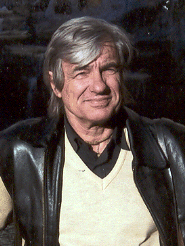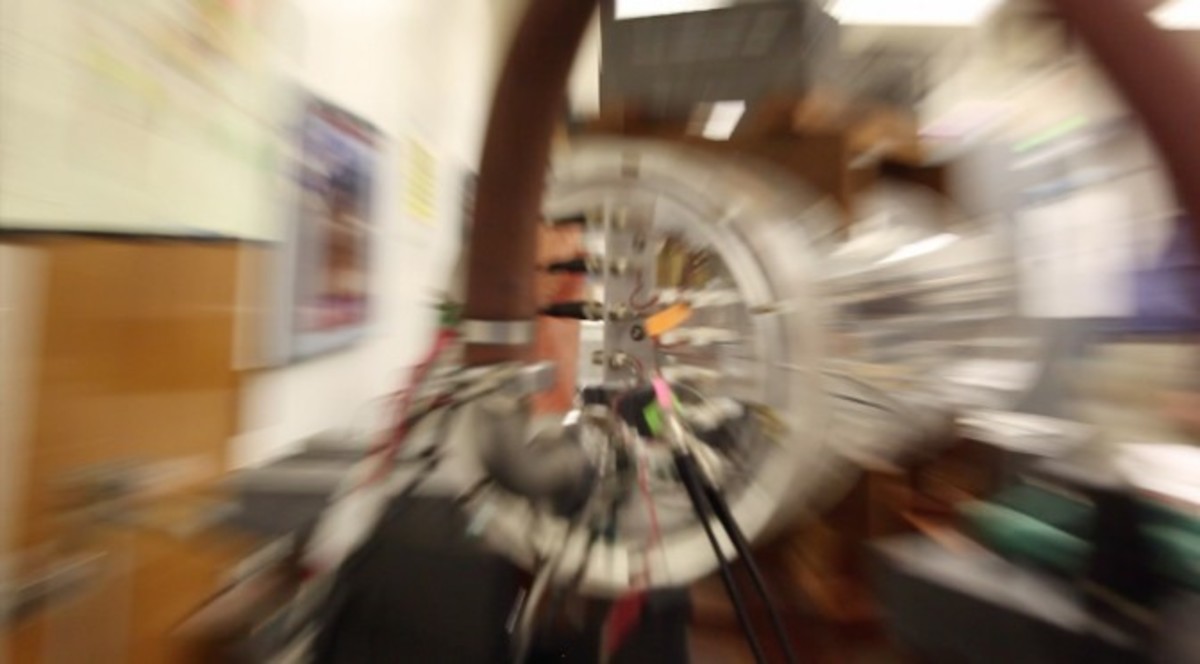Due to the fact that recently the discussion has gained many colours, and today there is also the topic of the death of a loved one, epistemology, ontology, and a little earlier I mentioned life and entropy, today I would perhaps allow myself to slightly deviate from the main topic, but still be close to it . Hence, I would like to share with you some of my considerations regarding, among others, stars, ageing, time, eternity and consciousness. In the background, however, we will be accompanied by vaguely understood entropy, which seems to be only a kind of noise. However, it will be heard in the next longer post, which will also deal with negentropy and the arrow of time. This post is going to be a bit scientific, a bit philosophical and a bit poetic.
In Christian eschatology the notion of eternity is interpreted in two, seemingly different manners. The first of them can be identified with the endlessness in time. In this view the consciousness of eternity is at least equally frightening as the consciousness of extinguishment. The perspective of eternity is a tragedy for a human mind. The mind, despite the fact that it is fully dependent of time, does not understand the essence of timeliness. The mind lives in sequences of the past and the future, it cannot, however, experience the presence. The past is the possessed identity for the mind, whereas the future functions as an identity that will be acquired. Consequently, the eternity leads to a collection of countless elements of the past and the future. The limitless number of entities causes the world (mind) to extinguish as a result of splintering into elements, among which each one is bigger than the whole.
States of energy and matter are not that different from each other. The expanses are one expanse. The only difference is time. However, time can be known only in the context of the expanse and matter (energy). Matter is only a denser form of energy. The eternity perceived as time infinity cannot be realized due to the impossibility of its ending, in order to find out whether it is done. The infinity exists in regards of the faith but it does not exist against the logic. One of the problems with entropy, however, is that it could only be empirically proven in the face of eternity.
In a different view, the eternity is understood as a timeless “existence”, which “is realized” in a medium different than time and mutually ambiguous with time. According to that idea there is an alternative, independent manner of cognition that is not related to time.
A hypothetical, alternative Universe has no concept of time or process. It also does not contain notions bijective to the above. There are, however, bijective notions with relation and metarelation. Nonetheless, they do not possess the time element and they cannot be reduced to it. The presence of relation only allows for timeless existence of conscious beings in the timelessly describable Universe.
The timeless eternity rids the above Universe from all differences that make it completely homogeneous regarding its homogeneity (there are no different views as the differentiating category (time) is eliminated). Timelessness determines the notion of isomorphism of “strictly defined epistemology”, which cannot be comprehended by a time-space mind.
The mind sees life as a time striving towards death. It describes and classifies numerous processes leading to death such as evolution of a star or apoptosis of an organic cell. Death ascending to its own event horizon is not time. When a mind dies, time stops moving. There are thousands of theories about the existence after death of the dead entity essence. In the context of time there is the important question regarding the placement of the border, at which the death occurs as it is the border between time and a lack of it. A place where time becomes timelessness, space becomes spacelessness and logic becomes irrationality. Defining transitions requires the existence of a bond that holds the characteristics of the mind and the characteristics of the spirit together. The bond is a combination of elements from this world with the elements from the spiritual world, which cannot be comprehended by a logical analysis. Spirituality requires entering beyond the highest philosophy, which may be comprehended with the mind. In this view, death is enlightenment.
Timeless spacelessness that has no thoughts is viewed as the higher state of existence. It is what the girl from one of my dreams became when she splintered into elements, among which each one of them was bigger than herself. An element of the Universe becomes the whole Universes. The fog flows and remains again. All definitions are burnt. Cognition only happens beyond cognition.
In the context of biological and physical sciences, it is interesting to assume that there are beings that are ageing in a different way than this known to the human. The ageing process of the stars will be analyzed based on the time-varying effects of the Sun.
The Sun is a nearly perfect sphere of hot plasma, with internal convective motion that generates a magnetic field via a dynamo process. This is by far the most important source of energy for life on Earth. It turns out that the Sun and other stars can provide a rational study for the analysis of single-cell organisms and cellular ageing. There is the assumption that stars exist in very similar laws as unicellular ones.
Hydrostatic equilibrium is a state of matter, when the enormous force of gravity is balanced by the pressure-gradient force, acting in the opposite direction. The energy of stars comes from nuclear reactions that are catalyzed by extremely high temperatures. Due to above phenomena, stars remain in their equilibrium state until a burning fuel leads to the collapse or to the different tragedy that is able to close the current stage of life of the celestial creation. To maintain the equilibrium there must be cycles that allow reactions to occur. When positively charged proton is approaching to the nucleus, it interacts with repulsive electrostatic force, but after travelling a proper distance, extremely strong forces stop it inside of the nucleus.
Proton-proton chain reaction allows the connection of four hydrogen nuclei into helium nucleus. This cycle is the main reservoir of energy for smaller stars like the Sun.
At the beginning, the pp chain reaction involves the fusion of two protons into deuterium, releasing a positron and an electron neutrino. Subsequently, the deuterium produced in the first stage fuses with another proton to produce isotope of helium 3He and gamma quanta. There also exist different possibilities. They lead to emergence of helium 4 in the second reaction (pp1), to two 4He (pp2) or even to obtaining two 4He from 8Be. If the length of the chain is expressed by pp1<pp2<pp3, then there is an increase of the importance of neutrinos in transport of energy from interior of the star to interplanetary space (from ~2% to ~25%). The mechanisms that are described above are not the only ways of living of the stars.
In 1938 Hans Bethe proposed the CNO cycle. As indicated its name, a special role is here played by carbon, oxygen and nitrogen. This cycle refers to quite massive stars (temperature of nucleus is equal about 20 million K), and uses carbon as a catalyzer. Therefore, by definition, carbon cannot be consumed.
The CNO cycle may be analyzed from anywhere, but the most convenient starting point is the place where the hydrogen combines with carbon 12, releasing gamma quanta and creates from it nitrogen 13, which further decays into a positron and an electron neutrino forming carbon 13. As a result of attachment of the next hydrogen, there arises gamma quanta and nitrogen 14. Subsequently, nitrogen 14 reacts with hydrogen and we obtain oxygen 15. The unstable isotope of oxygen falls apart into nitrogen 15, positron and electron neutrino. Then, nitrogen 15 is able to attachment the final hydrogen. Synthesis causes re-production of carbon 12, but this time the by-product is helium 4. After exclusion of catalyzing cycle, a totality could be considered as a simple synthesis of four hydrogens into helium and releasing of two positively charged particles endowed with a mass of electron.
In a star throughout its existence takes place a variety of other physical and chemical reactions. As a result, these creations change with the change of its properties ending its life as white dwarfs cooling down for a period that is longer than the current age of Universe, or as black holes. However, in this context it is worth recalling the biological reference.
As is commonly known, Calvin cycle is consisted of 13 reactions that are usually divided into three groups: downloading carbon monoxide IV, a reduction in the level of oxidation of carbon and regeneration of RuBP.
The reaction of six molecules of carbon monoxide IV of the phosphorylated compound of five carbon atoms in its structure is catalyzed by the enzyme RuBisCO (ribulose-1,5-bisphosphate). The last one is the predominant protein in the chloroplast stroma that is involved in treatment of received energy and substrates by forming compounds that support and develop life of the plant. Thanks to adenosine triphosphate ATP changing into the adenosine diphosphate ADP and NADPH changing into NADP + there occurs the reduction in the level of oxidation of carbon. These changes allow the formation of two molecules of aldehyde (compound of a lower oxidation than the corresponding acid), which turns into nutrients. Then, there occurs the regenerative phase, in which the molecules of glyceraldehyde-3-phosphate acceptor is restored to CO2 - ribulose-1,5-bisphosphate.
The whole cycle is dependent on the simpler form of assimilation of light energy inside the thylakoid that occurs due to water and light energy. Very unstable ATM immediately must be developed. However, what happens in the chloroplasts of the plant, which, due to drought and heat, needs to close the stomata to water does not evaporate? Many plants, especially living in a hot and dry climate adapted to the effective formation of carbon compounds. These processes precede the Calvin cycle, but do not replace it. In the cells of living organisms there occur miscellaneous cycles, such as for example urea cycle in animals or Krebs cycle.
Everything we call matter, including all heavy elements, had to be created in the spectacular tragedies of stars ending their lives. At the same time, the whole matter is born in a similar manner, governed by similar laws, organized in a similar way. Everything is created from one substance, which by creating different densities and different proportions is able to achieve so much. Unity and diversity.
The unity of micro and macro world is reflected by the Hertzsprung-Russel diagram, which after changing value on the vertical axis of the magnitude to deviation from the standard magnitude seems to remind the normal distribution. The probability of finding a big star with a small mass could be compared to the probability of finding a tall human with a low weight. These are so-called little scientific evidences.
A Hungarian biologist and biochemist, Tibor Gánti living at the turn of the 20th and 21st century decided to define the conditions necessary to regard an object as living. These have been universally recognized by modern science. Therefore, the organism considered living should satisfy the following conditions:
1. It is distinguished from the outside world.
2. It has metabolism.
3. It is internally, homeostatically stable.
4. It possesses a subsystem of collecting and processing data.
5. Processes inside the system are regulated.
6. An object must be capable to growth and reproduction.
7. There is a volatility in replication.
8. An object is mortal.
The last three conditions are so-called potential features and they are not necessary but they are usually satisfied by the living organisms.
Now there ought to be discussed whether and how the aforementioned points will be referenced to the stars.
Referring to the first point, a star is definitely distinguished from the outside world as this is known that the space vacuum is thinner than the best laboratory vacuum. Moreover, the distance that separated the celestial bodies many times exceed the size of the Earth, thus it could be assumed that on our planet there are no organisms separated from each other further than the Earth diameter.
Referring to the second point proton–proton chain reaction and CNO cycle are much more complex than the cycles in simple organisms considered as living.
A propos of hoemostatic stability, a condition for a star to exist is a homeostasis, a balance between the force of the “explosions in the core” and the gravity, moreover a star is much more stable than the organism with the longest lifespan on the Earth. Several million times.
With regard to the fifth point, if the processes inside the star, such as cycles, are not regulated by diverse conditions in the zones of the star, it would lose its stability and disintegrate; it is regulated by the factors that created and sustain the life on our planet.
When it comes to the sixth and seventh points, unquestionably, a star changes its size, and does it much more often than any living organism. It creates a new formation, sometimes several new formations, they are borne from clouds and to some extent, transform into them, becoming a substrate for creating new ones. It could be postulated that reproduction by budding or the cloning of plant by planting a portion of the stem in the ground could not compete with the phenomenon of creating stars. (And out of curiosity, I will ask a question. Do any of you know where the photo that is my avatar comes from?)
Referring to the eighth point, the stars are mortal, whatever that means, as for something to die, it first has to live, so if they can die, they live, and if they live, they can die. It is hard to determine whether something is mortal until we do not know if it is alive, but to determine that it is alive, it must be possible to die. From the logical point of view, this condition is fulfilled for all objects and for none. It could be considered as a sophistic nonsense.
But returning to the fourth point, it is worth asking whether the stars have a subsystem for collecting and processing data in the structure? If it exists, it is still not discovered by us. Perhaps some undetectable particles transfer such information beyond our boundaries of perception.
When a star with a quite low mass (e.g. the Sun) reaches the stage of a giant, its last, desperate attempt to extend its life occurs. As it is known, the metabolism is divided into anabolism and catabolism. A balance in sustaining life includes the occurrence of antagonistic processes conditioning the survival that are induced by the laws of physics and principles of chemistry (reaction to stimuli and set conditions). Efficient, living organism is able to adapt to the specific situation. Glucose consuming bacteria transferred to the galactose medium unlock in its annular genetic information physically blocked by a piece of organic part an element with the stored method of decomposing a new food in order to obtain the energy needed for life. The anabolic processes may be associated with combining simple compounds into complex ones, and katabolic processes with the reversed reactions. There is no doubt that nuclear transformation that results in obtaining helium (from that reaction an energy necessary to the life of a star is obtained) is a reaction of synthesis, hence the reversed reaction is analysis, which occurs when a star joins the group of white dwarfs. This reaction results in obtaining fuel from the disintegration of more complex (compared to hydrogen) elements. There is even a moment when the same reaction of combustion occurs in the core and outside of it.
During the main sequence (see: HR diagram), stars (that combust hydrogen) perform very similar movements, thus their metabolic behaviour is as uniform as in many animals. On the HR diagram they move on the horizontal plain to the right, slightly upwards, then to the left, and at the end to the right. The horizontal axis describes the spectral type, so it includes the star temperature that is responsible for colour of the light that it emits. The vertical axis describes the brightness, the higher place of the star, the brighter it is.
The diversity of the reactions in stars is, however, directed. Its role is to survive, use the available medium, and at the same time emit light just as us, people, emit the infrared light - heat. The above description is congruent with the simplest schema and definition of metabolism. A star has metabolism, simple one and not based on chain relationships.
Another argument supporting the metabolism theory is the occurrence of the same reaction in different environments, meaning degenerated and none-degenerated. Depending on the mass of the star, its fate is different, although there is an analogy and general tendency here.
This supplement discusses points 2, 3 and 5 of the previously mentioned conditions. However, point 4 is still lacking. From the philosophical point of view and so the scientific, a manner of storing information may be very divers and the fact that the arrangement, due to gravity, of the planetary nebula (and from its combination in the far future a new star may be borne) is very distant from the human deoxyribose is not a counterargument. Someone attempting to invalidate the living stars hypothesis may ask whether there is a difference in burning a piece of paper that is empty or the one that has something written on it. The answer is obvious, yes. The difference cannot be seen by us, which is not an argument for inanimateness of stars, but for the incompetency of our human taxonomic unit. Does everything processes information? There are hypothetical models in which the whole world is a stream of information as the world is purely material and it has no space for certain philosophical creations.
From the information theory point of view life is: a periodic ability (feature) of the individual system controlled by information and processing information, of using and transferring the semantic information contained within it.
To sum up, in the light of so many views on the issue of life, it is not easy to determine where the limit lies, but one may refer to organisms already considered alive. There is no doubt that a star surpasses the most primitive ones, but we subconsciously connect the discussed definition with our planet just as sunrises and sunsets were linked to the Earth being in the centre of the Universe and the apparent lack of movement of the stars with their steadiness.
The stars have lasted for billions of years, they are a source of energy and life, inspiration to artists, the objects of interest for the scholars, they exist and will exist long after the last man speaks the last word, but we are the ones who name them, describe them and explore them.
Do they know us if we are made of them? In a certain way, yes - but it is different from our way of perception.
This is a wonderful post. I can tell these topics are very dear to your heart. And a wonderful thread, too! Thank you for beginning it. My days have been filled with a sense of renewed curiosity since I began reading. It is a confirmation that I don't know anything. I'm always using words that I don't know much about - Reason, Faith, Soul. I feel like a kid with a set of wax crayons who is trying to mimic Van Gogh.
I studied complex systems theory in university, and suddenly I was seeing emergent properties and the dynamics of holons everywhere. I was pondering Unity and diversity. It was a very special time in my life. This thread is having a similar effect.
An example - I see a leaf. And then I think about what signals the leaf is sending. What information is there? I see the shape and colour, what type of tree, the chlorophyll in the cells, the process of photosynthesis that allow plants to 'eat sunlight', and a whole dynamo of sugar, oxygen, carbohydrates, roots in the soil, cycles of seasons, seed and flower, the tree's place on earth, its place in the solar system, etc. It's like the quote from John Muir:
When we try to pick out anything by itself, we find it hitched to everything else in the universe.
On a second note, I thought it would be good to contribute the following about stars. The topic is information theory, so it makes sense that our examples also contain 'good information' (whatever that may be!).
There is some debate about the fusion hypothesis in stars, especially in light of the rise of plasma cosmology.
In an interesting twist, Gurdjieff has a chapter in which he also claims that the sun neither lights nor heats! From p. 135 of Beelzebub's tales. He says,
"In reality, the surface of their 'Source-of-Heat,' like that of all the ordinary suns of our Great Universe, is perhaps more covered with ice than the surface of what they call their 'North Pole'."
Perhaps Gurdjieff was referring to superionic ice:
Recently at the Laboratory for Laser Energetics in Brighton, New York, one of the world's most powerful lasers blasted a droplet of water, creating a shock wave that raised the water's pressure to millions of atmospheres and its temperature to thousands of degrees. X-rays that beamed through the droplet in the same fraction of a second offered humanity's first glimpse of water under those extreme conditions.
The X-rays revealed that the water inside the shock wave didn't become a superheated liquid or gas. Paradoxically - but just as physicists squinting at screens in an adjacent room had expected - the atoms froze solid, forming crystalline ice.
"You hear the shot," said Marius Millot of Lawrence Livermore National Laboratory in California, and "right away you see that something interesting was happening." Millot co-led the experiment with Federica Coppari, also of Lawrence Livermore.
The findings, published today in Nature, confirm the existence of "superionic ice," a new phase of water with bizarre properties. Unlike the familiar ice found in your freezer or at the north pole, superionic ice is black and hot. A cube of it would weigh four times as much as a normal one. It was first theoretically predicted more than 30 years ago, and although it has never been seen until now, scientists think it might be among the most abundant forms of water in the universe.
Across the solar system, at least, more water probably exists as superionic ice - filling the interiors of Uranus and Neptune - than in any other phase, including the liquid form sloshing in oceans on Earth, Europa and Enceladus. The discovery of superionic ice potentially solves decades-old puzzles about the composition of these "ice giant" worlds.
It could be that superionic ice may also help solve the puzzle of our friend the sun, and what he is doing up there.
Mysteries abound.





